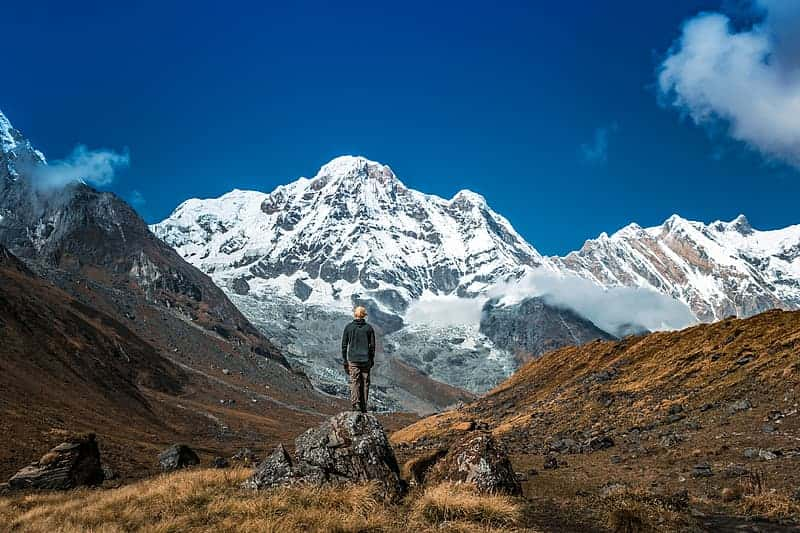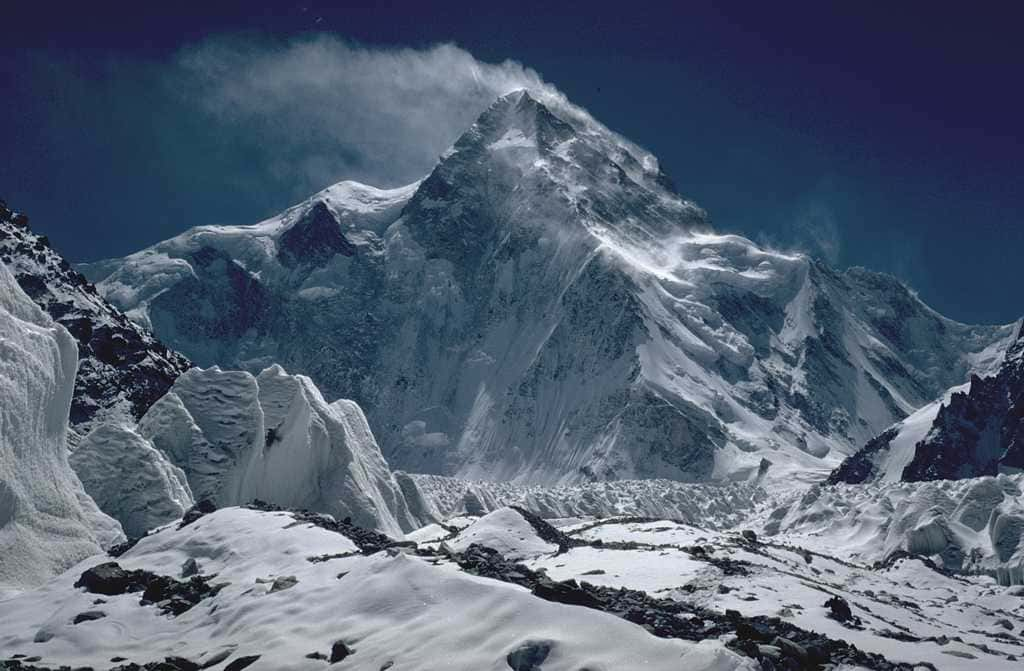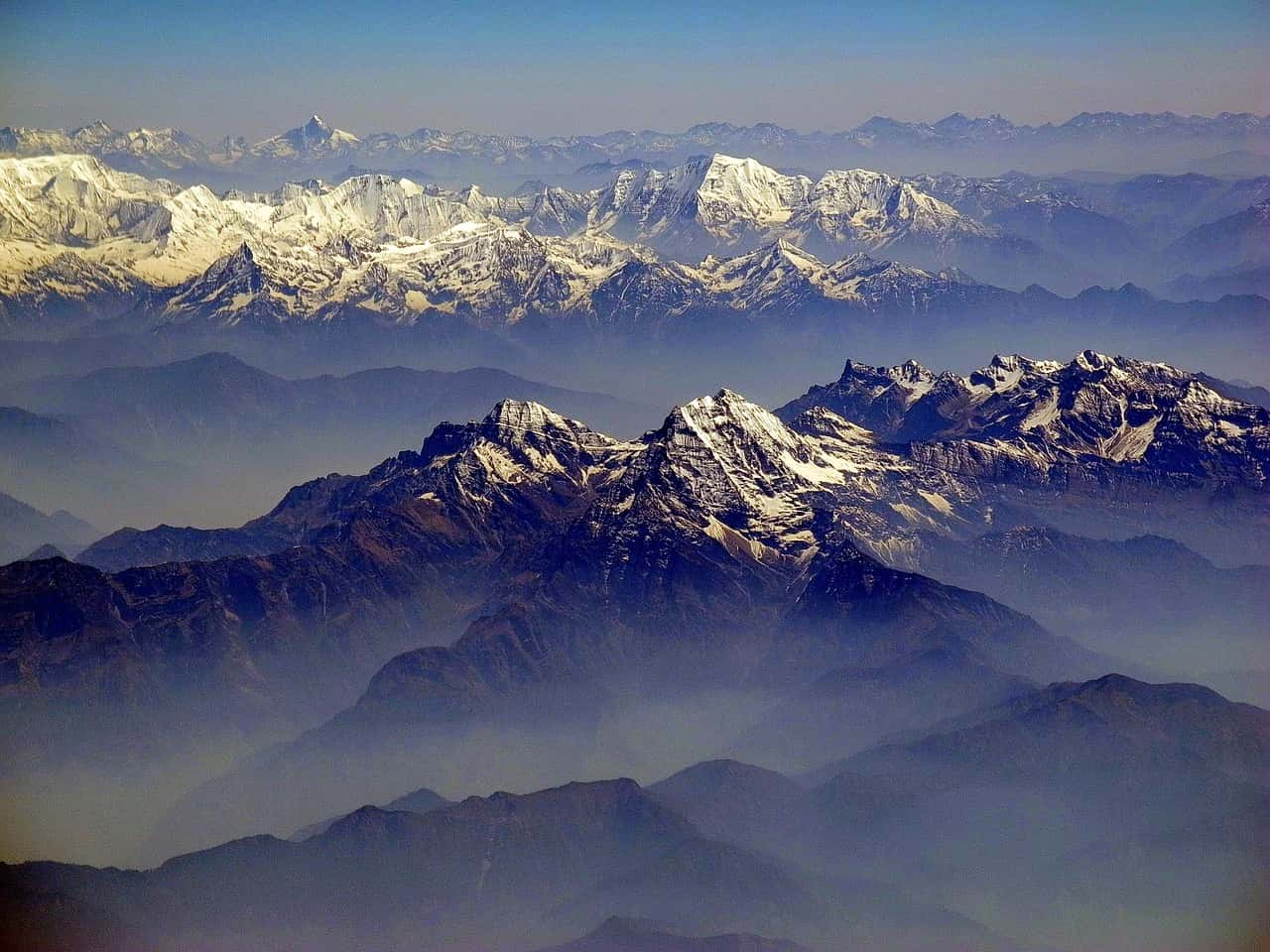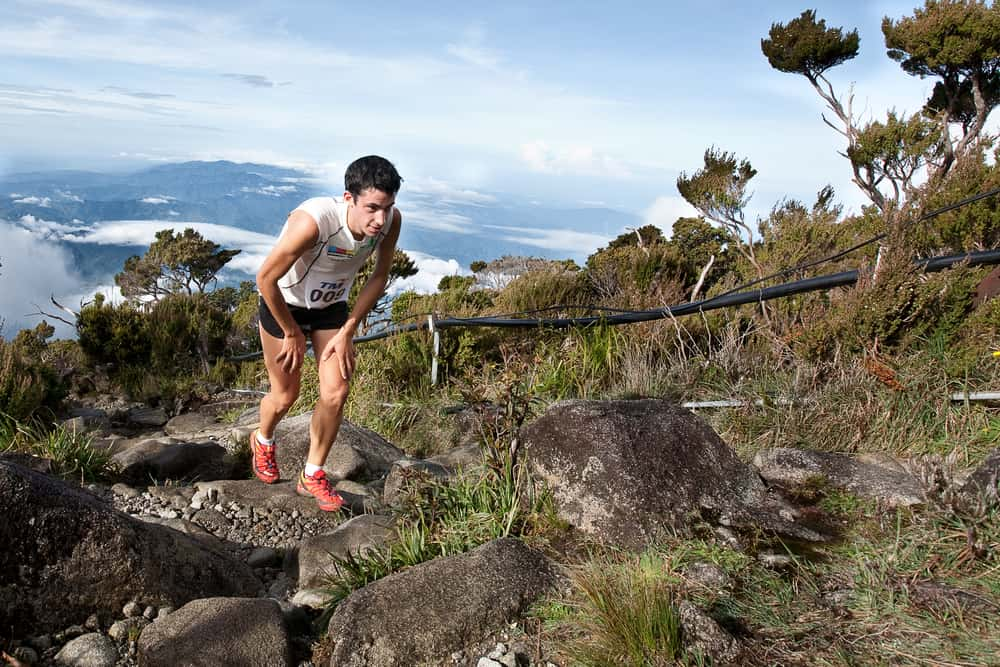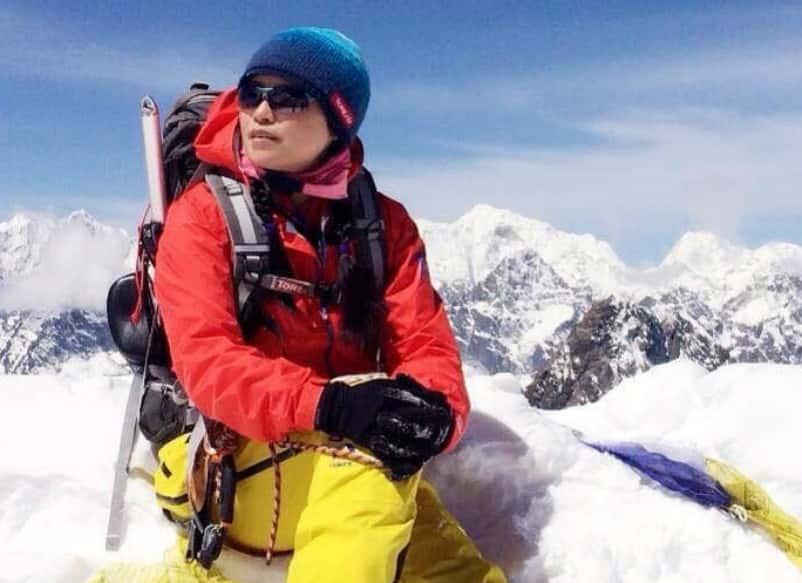Since time immemorial, few things have both united and divided human beings as much as sport and the pursuit of adventure. However, as much fun as sports can be, they also have their dangerous side.With an extreme sport such as mountain climbing, those dangers only become amplified. Attempting to climb and conquer some of nature’s harshest creations sounds like a daunting task because it truly is one. Many who have tried it have never been the same, if they were even lucky enough to live to tell the tale. Nevertheless, the sport remains as popular as ever. It provides a unique sense of accomplishment and exhilaration to the lucky few who manage to excel at it. Here are 42 adventurous facts about the people, settings, and history that make mountain climbing so fascinating.
1. I Don’t Like Those Odds
Nepal’s Annapurna summit is the mountain climbing route most likely to kill you if you attempt it. Thanks to the lack of safe pathways to access it by and its extremely dangerous and inconsistent weather conditions, only five out of every seven people who attempt to climb it survive. For those who are counting, that’s a more than 40% fatality rate!
2. A Scary Streak
Since 1978, at least one person has passed on every single year while attempting to climb the world’s tallest mountain, Mount Everest.
3. Second Is the Best
Despite being shorter than Mount Everest, China and Pakistan’s K2 Mountain is far more dangerous to climb due to its many natural obstacles—including unusual glaciers, steep rock formations, and a group of ice pillars that collapse at random times without warning.
4. The In-Group
All 14 of the world’s tallest mountains are found in the Himalayan and Karakoram ranges. Known as the “Eight Thousanders,” each of these peaks stands at over 8,000 meters above sea level.
5. Anything You Can Climb, They Can Climb Better
Scientific research has demonstrated that the bodies of the Sherpas, an ethnic group whose people live in the Himalaya region and traditionally serve as guides for climbers, have physically adapted to their environment so greatly over the generations that they are now biologically more capable of successful mountain climbing than other humans are.
6. Stormy Weather
As enjoyable as it can be, mountain climbing’s dangers have real consequences sometimes. In 2014, 39 people were killed when avalanches erupted on Nepal’s Annapurna mountain in the middle of a popular tourist season. Hundreds of people were caught in the middle of what became the highest death toll in the mountain’s history, and many of the survivors had to have limbs amputated due to severe frostbite.
7. Twice in One Year
Just months before the horrific avalanches that took the lives of 39 and injured hundreds on Annapurna, another major tragedy struck on Mount Everest. In April 2014, sixteen Sherpas who frequented the mountain as guides were suddenly killed when an unexpected icefall developed. Three of the frozen bodies have still never been recovered to this day, due to the danger that would come with trying to get to them.
8. Adding Insult to Injury
Many Sherpas were outraged by their government’s lack of serious response to the April 2014 Mount Everest tragedy that struck their community. As compensation for their suffering, the Nepalese government merely offered each of their families an amount equal to roughly $400. In protest, much of the Sherpa population went on strike and refused to climb the mountain again for the rest of the year.
9. Penny for Your Thoughts
Uhuru Peak is the highest point on the crater rim of Mount Kilimanjaro’s dormant volcano, Kibo. A box is stored on top of this peak so that all who set foot there can record their thoughts and feelings in the moment for future climbers to discover. Most individuals who have reached this spot have contributed a note to the box.

History's most fascinating stories and darkest secrets, delivered to your inbox daily.
10. Back in My Day!
Present-day adventurers are far from the only people who have been interested in the sport of mountain climbing. In fact, Chinese paintings from as far back as 200 BC depict people participating in the activity.
 Shutterstock
Shutterstock
11. Oh No You Didn’t!
There was a major dispute in 2010 over who had the right to truly call herself the first woman to ever successfully climb all 14 of the “Eight Thousanders.” Just around the time that Spain’s Edurne Pasaban was completing her historic quest for the title, South Korea’s Oh Eun-sun claimed to have accomplished the feat ahead of her. Nevertheless, experts ultimately disputed Oh’s claim, and she herself eventually admitted that she had stopped several meters before the end of one of the routes—leaving Pasaban with the title after all.
12. Second Time’s the Charm
In 2003, 70-year-old Japanese athlete Yuichiro Miura set the record as the oldest person to ever climb to the top of Mount Everest. This record lasted until it was broken a decade later—by himself!
13. Never Give Up
After becoming a leading American mountain climbing prodigy during his childhood, Pennsylvania’s Hugh Herr suffered severe frostbite when he got stuck in a blizzard for three nights while climbing New Hampshire’s Mount Washington. Herr had to have both his legs amputated—but he didn’t let it get to him. Thanks to his resilient attitude, Herr designed a set of artificial legs for himself and within a few months was right back to mountain climbing!
14. Rock-a-Bye Baby on the Mountain Top
As scary as the massive mountains of Asia might be, North America can boast some epic peaks of its own. In California, Yosemite National Park’s El Capitan is an enormous vertical monolith with no climbing routes that aren’t extremely challenging. Because of the mountain’s shape, climbers need to hang hammocks off of spikes in order to be able to sleep throughout the 4 to 5 days that the journey takes.
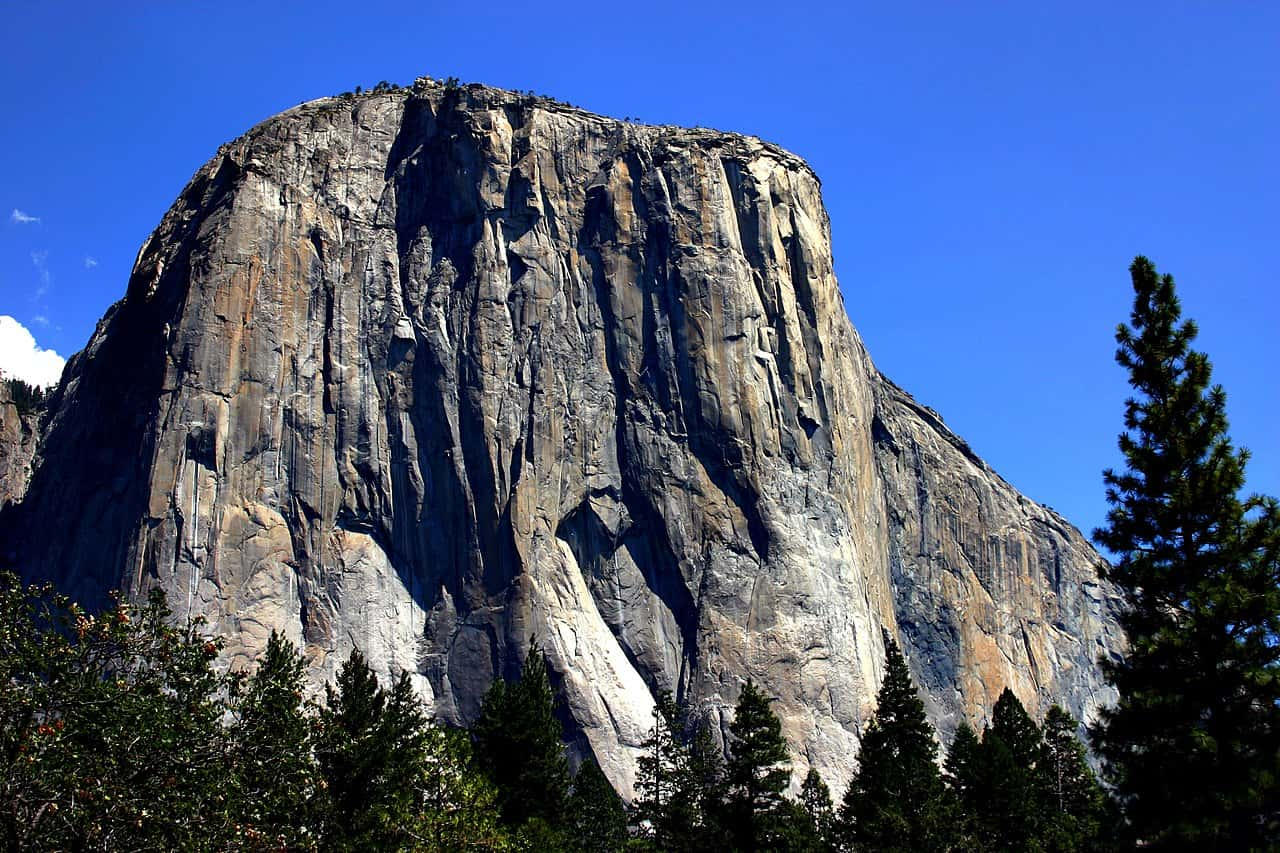 Wikimedia Commons, Mike Murphy
Wikimedia Commons, Mike Murphy
15. Correcting the Record
After three failed attempts by American adventurers, the summit of K2 was finally reached for the first time by two Italian climbers in 1954. However, a controversy that would rage on for five decades quickly followed. There were questions over inaccuracies in the details of the pair’s official report until a second official report was finally created in 2007, correcting these errors.
16. Three’s a Crowd
Pakistani mountaineer Amir Mehdi had high hopes for becoming the first native of his country to conquer its K2 mountain. For this reason, he offered his services as a porter to the historic Italian team that was seeking to reach its summit in 1954. Unfortunately, after Mehdi tried to help the now-famous Italians by bringing them up an oxygen tank, they dealt him a cruel act of betrayal.
The Italians sabotaged him and left him out in the cold to die so that he would not be able to reach the top and share the credit with them—but they never could’ve predicted what happened next. Mehdi miraculously survived the night he spent in the extreme cold and managed to climb back down to safety the next morning.
17. Gesundheit!
Due to the extreme altitude of mountains such as Everest, climbers often experience headaches, shortness of breath, and even a condition called “high-altitude cough.” Despite its innocuous-sounding name, this condition is actually quite serious. Coughing excessively while surrounded by intensely cold temperatures can cause broken ribs or even a cracked lining of the lungs.
18. Who Done It?
One of the strangest unsolved mysteries of all time is known as the “Dyaltov Pass Incident.” It involved a group of Russian students who died on the mountain in 1959 shortly after setting off on a hiking expedition. Despite the official report’s claim that the cause was a “compelling natural force,” many clues call this conclusion into question. For example, some of the students were wearing nothing but their underwear, had fractured skulls and other bone damage, or had left footprints leading away from their tent. One of the students was even found with his eyeballs missing!
Conspiracy theories about what really happened have speculated ideas like alien abduction, a clash with jealous local animal herders, or even a government cover-up of a secret testing program.
19. Women’s Intuition
Many long believed that there was a curse upon all females who climbed the world’s second tallest mountain, K2—in fact, the first five women who ever successfully climbed it all passed on shortly after in various unexpected mountain climbing accidents.
20. All Bad Things Must Come to an End
Legendary Spanish climber Edurne Pasaban is believed to have broken K2’s curse on women in 2004. She successfully climbed it and returned without any apparent consequences. She’s still going strong now more than 15 years later!
21. Nicknames Never Lie
Most of us know the Swiss Alps as one of Europe’s most iconic picturesque scenes. To climbers, they are so much more than that. Among other things, the Alps are home to Eiger, whose northern face is nicknamed “Murder Wall.” This is thanks to its technical challenges, which have claimed the lives of 64 people since 1935. Despite the fact that this mountain can much more easily be climbed from its other side, many adventure-seekers choose this side because of its notoriety.
22. Team Spirit
The Matterhorn is probably the most famous mountain in the entire Swiss Alps region. However, it has a dark history that not everyone might be aware of. Back in 1865, during the first time the mountain was ever climbed, the team of seven that made the trek came back as only a team of three. On the way down, one of the climbers slipped and caused the team’s rope to snap. This caused four of the climbers to fall to their dark fates.
23. Getting Scientific
Like many of the world’s most awesome mountain ranges, the Himalayas were formed as the result of two continental tectonic plates colliding into one another. That must have made quite the boom!
24. Head, Shoulders, Knees, and Toes
Ecuador’s Santiago Quintero has summited every major mountain in South America since 2004—and he did it all without toes. Not only did he lose his toes from frostbite after a climb in 2002, but he has chosen to never replace them with prosthetics of any kind.
25. Run for Your Life
Climbing Mount Everest is an incredible achievement—but running up it in one go is completely unheard of, right? Well, not anymore! In 2016, Kilian Jornet shocked the world by achieving this very feat. Talk about a marathon!
26. Mystery Solved
In the 1920s, much of the North American West remained uncultivated and undiscovered. When pioneering husband and wife mountain climbing team Don and Phyllis Munday spotted a far-off mountain that appeared bigger than any known peak in British Columbia at the time, it sparked a burning desire in them to locate and climb it someday.
Experts doubted that the mountain existed while the public found their mission captivating. The Mundays found and successfully conquered their “Mystery Mountain” just a few years later. Known today as Mount Waddington, it remains one of the highest peaks in the province.
27. Here Comes the Spooky Stuff
Climbing the world’s tallest mountain is hard enough—but what about when supernatural forces seem to get in your way? When British climber Frank Smythe took on Mount Everest for the first time in 1933, he claimed to have witnessed some bizarre-looking balloon-shaped objects hovering above him in the sky as he made his way up. He also reported feeling a “strong presence” following behind him during the climb.
28. Taking the Easy Way Out
Chinese businesswoman Wang Jing caused controversy in May 2014 when she became the first person to climb Mount Everest since the tragedy that took the lives of 16 Sherpas on the mountain the previous month. Not only was her trek controversial because of its timing, but also because she cheated—she had a helicopter drop her off at a higher starting point than where the icefall had taken place.
29. Not Going Down Without a Fight
In 1985, Simon Yates and Joe Simpson became the first people to ever conquer the directly vertical western face of South America’s Siula Grande mountain—but to say it was hard would be an understatement. On their way back down from the top, Simpson took a 100-foot tumble and broke his leg. Amazingly, he then managed to crawl his way to safety along the side of a glacier over the course of the next three days! Against all the odds, he survived.
30. Conspicuously Absent
It seemed like just your average tragic accident when Swiss climber Ueli Steck fell to his death while climbing Nepal’s Nuptse peak in 2017—but further examination later revealed some bizarre details, leading many to wonder what really happened that day. He climbing a route that had not been part of his plan to begin with. On top of that, investigators also discovered that his bag contained none of the safety equipment that climbers would be expected to have on them at all times.
Why in the world would an experienced climber have neglected to pack his bag with items as basic as a helmet, harness, gloves, or trekking poles?
31. All in a Week’s Work
In May 2018, Kami Rita broke the long-held record for most ascents to the summit of Everest. He then took things to the next level when he climbed it another two times within a week in May 2019—bringing his career total, and the new record, to 24 climbs.
32. Who’s On First?
Although Sir Edmund Hillary is usually credited with having been the first climber to conquer Mount Everest, some have claimed that his Sherpa companion, Tenzing Norgay, actually set foot on the top before him. Among those who believe this to be the case are none other than Norgay’s sons, who claim that their father privately admitted so to them.
33. Shooting for the Stars
Eccentric British climber Maurice Wilson made big plans to climb Mount Everest in 1933 as an attempt to demonstrate that all of life’s challenges could be beaten through the power of fasting and prayer. Shockingly, Wilson made very few preparations to ensure that he would be capable of pulling off the climb successfully. Unfortunately, things did not go quite as planned.
No one is sure exactly how far up the mountain he made it, but other climbers discovered Wilson’s body the following year along with a diary that abruptly ends on the date of May 30.
34. Who Are You?
Locals were shocked when authorities discovered four corpses in a tent at one of Mount Everest’s base camps in 2017—but the story was about to take an even darker turn. Investigators found that none of the groups who had been mountain climbing at that time had any individuals missing or unaccounted for. Looking further into it, they then discovered that none of the groups who had climbed the mountain in the past year had anybody missing or unaccounted for, either!
It still remains unclear exactly who these people were or how their bodies ended up inside that tent.
35. Sadly Familiar
As awful as the 2014 Mount Everest icefall tragedy was, there is a layer to it that makes it feel even worse. Another almost identical icefall incident took place in the very same spot back in 1970, killing another six Sherpas.
36. Punching Above Its Height
Despite being the mountain that results in the most deaths, Nepal’s Annapurna is only the 10th highest mountain in the world.
37. Outside Forces
History’s mountain climbing tragedies are not exclusively the result of natural disasters. In 2013, terrorists pledging allegiance to al-Qaeda and the Taliban stormed a base camp at Pakistan’s Nanga Parbat mountain. They took the lives of 10 innocent tourist climbers, as well as one local guide.
38. Believe in Yourself
In 2015, 22-year-old Columbia University student Sasha DiGiulian became the first woman to ever successfully climb the Swiss Alps’ "Murder Wall." Her story is even more impressive when you learn how difficult it was for her. DiGiulian explained that she felt “almost paralyzed by fear” at many points along the way up. The worst points were when the reality of her dangerous surroundings would hit her.
Nevertheless, she stuck to her guns and managed to safely pull it off!
39. Going the Other Way
In 1970, Yuichiro Miura became the first person ever to ski down Mount Everest—a vertical descent of roughly 4,200 feet!
40. The Other Side of the Mountain
As exhilarating as mountain climbing can feel, being a professional climber is not all fun and games. For example, Edurne Pasaban, the first woman who ever climbed all 14 “Eight Thousanders,” fell into a deep depression after achieving the feat. Having devoted her entire life to that goal, she suddenly didn’t know what to do with herself now that it was complete.
She also felt some uneasiness over the fact that she forwent having a family in order to focus her time and energy on her mountain climbing goals.
41. A Pleasure Trip Gone Wrong
Taking an adventure-based vacation is a dream for many people—but for some, it can turn into a nightmare. Adventure Consultants, one of the first commercial groups to offer widely available tourist treks to Mount Everest, suffered the deaths of eight climbers during a 1996 trip due to a sudden blizzard. Public outcry and concern followed, including questions about whether offering such trips was a good idea after all.
42. Last One Up Is a Rotten Egg!
Rivalries are always fun, aren’t they? In 1871, Meta Brevoort was trying to become the first woman to successfully climb the Matterhorn. An earlier attempt had failed due to weather conditions. When her rival, Lucy Walker, heard about this plan, she decided she would have none of it. She rushed over to the mountain and began to climb as fast as she could—in a flannel skirt no less. Watson had one goal in mind: to ensure that her rival did not beat her to the title.
In the end, Watson made it to the top a few days before Brevoort did. She became the first woman to achieve the feat, while also proving what a great motivator spite can be!
Sources: 1, 2, 3, 4, 5, 6, 7, 8, 9, 10, 11, 12, 13, 14, 15, 16, 17, 18, 19, 20, 21, 22, 23, 24, 25, 26, 27, 28, 29, 30, 31, 32, 33, 34, 35, 36, 37, 38, 39, 40, 41, 42


